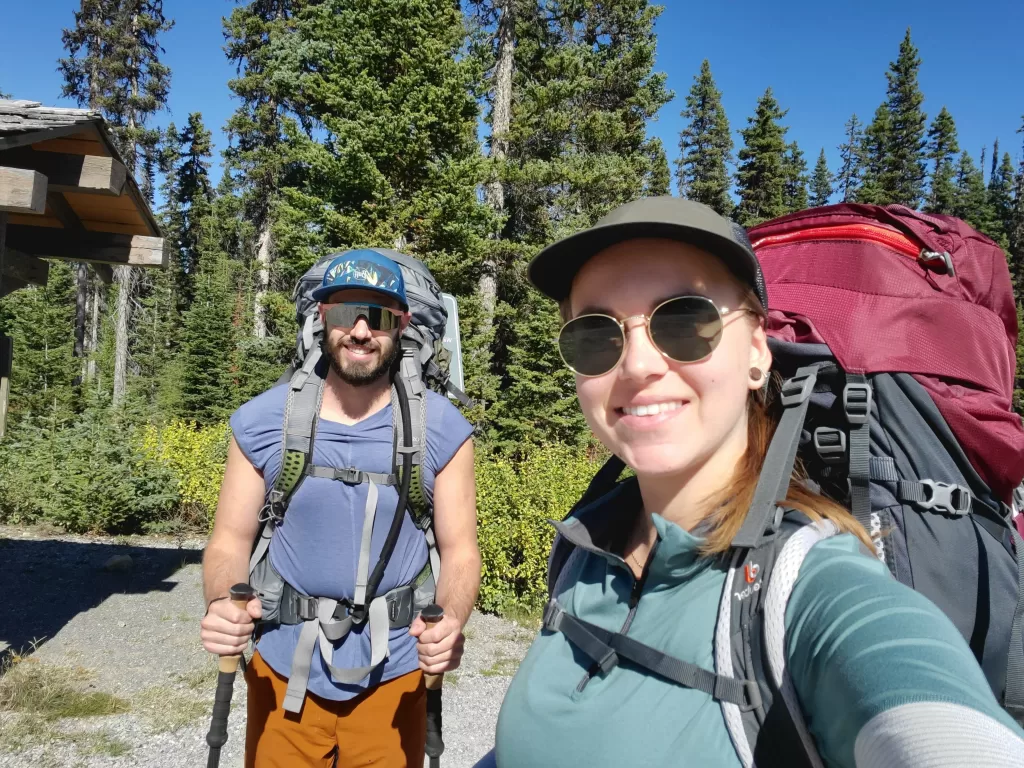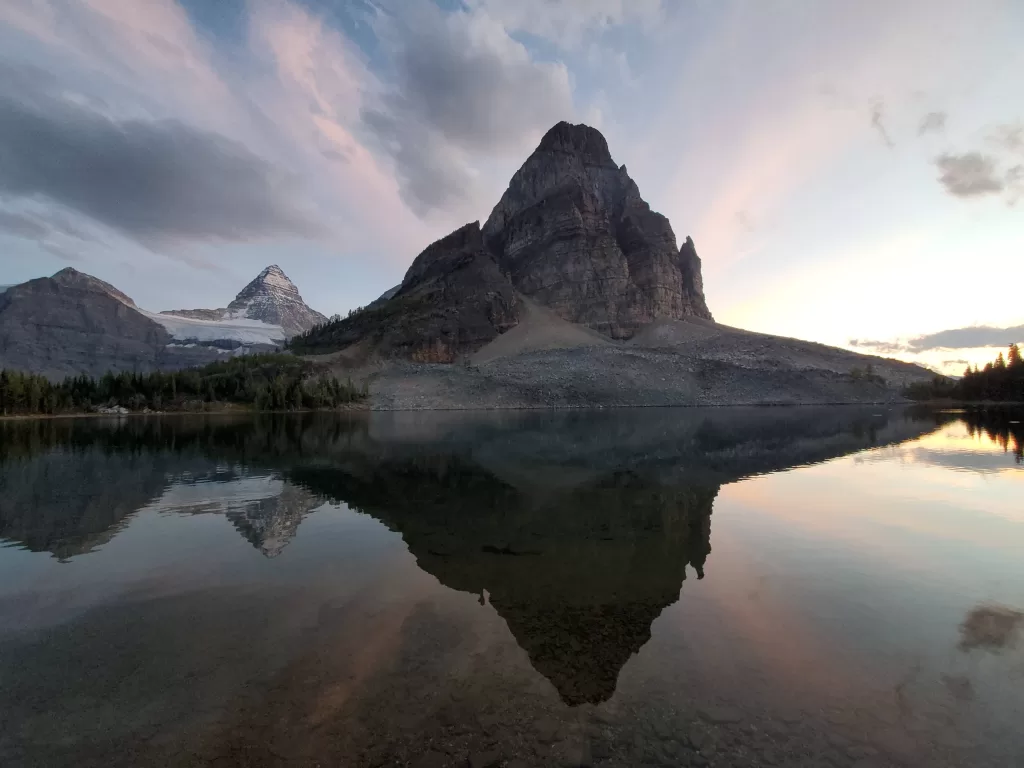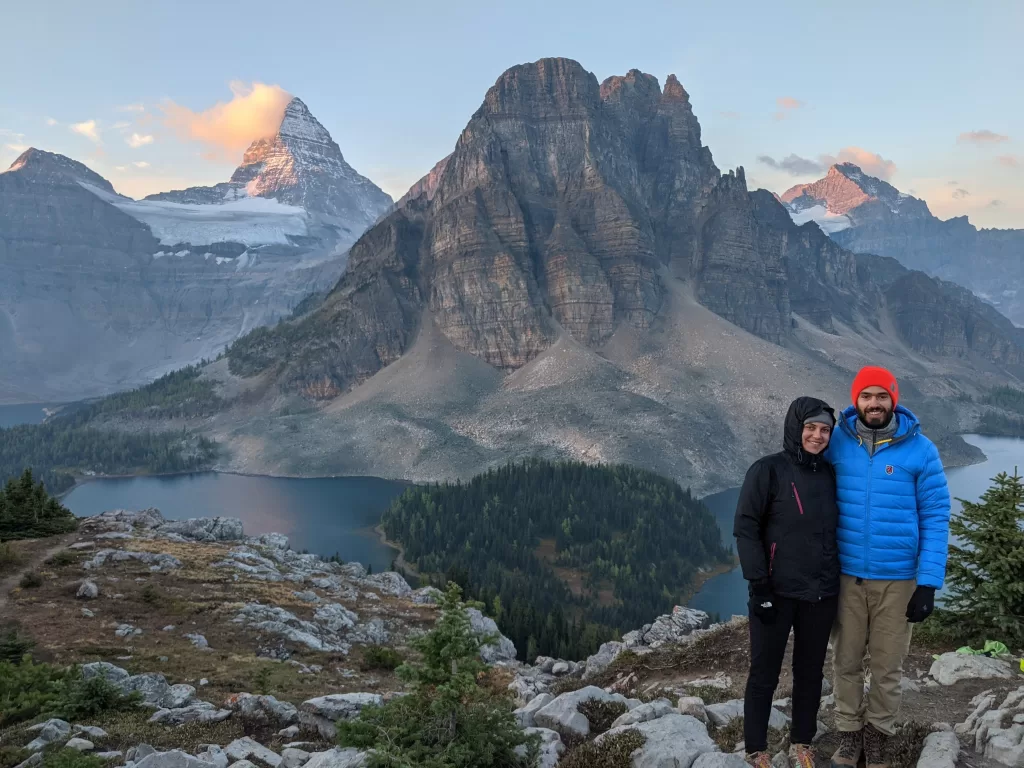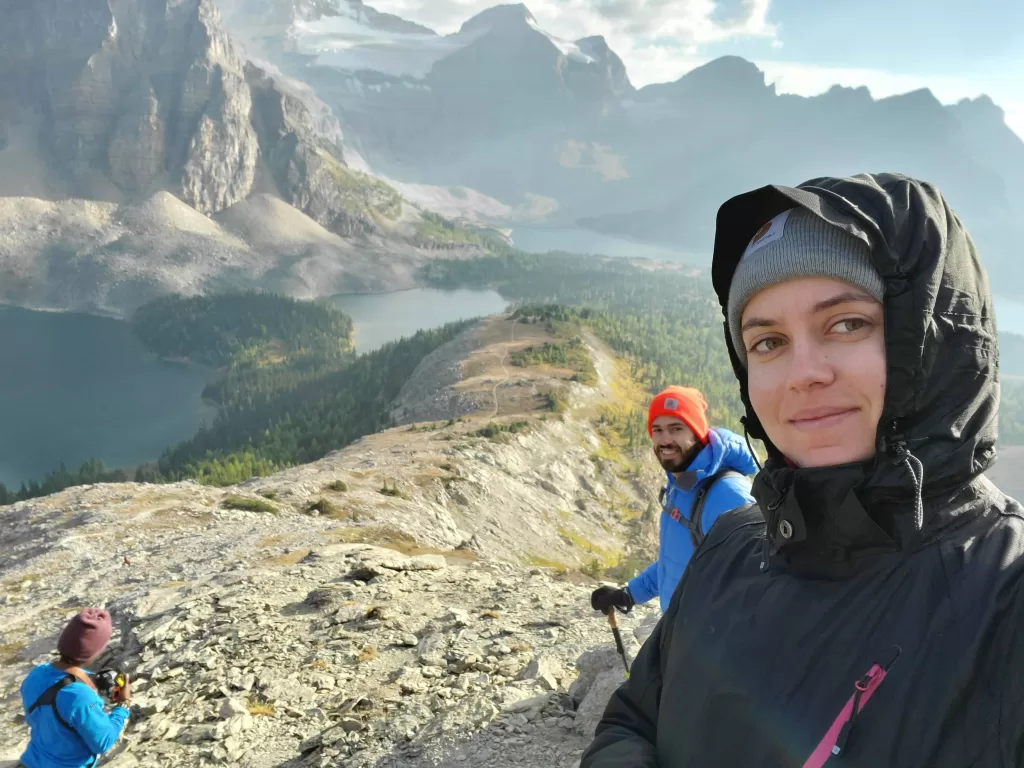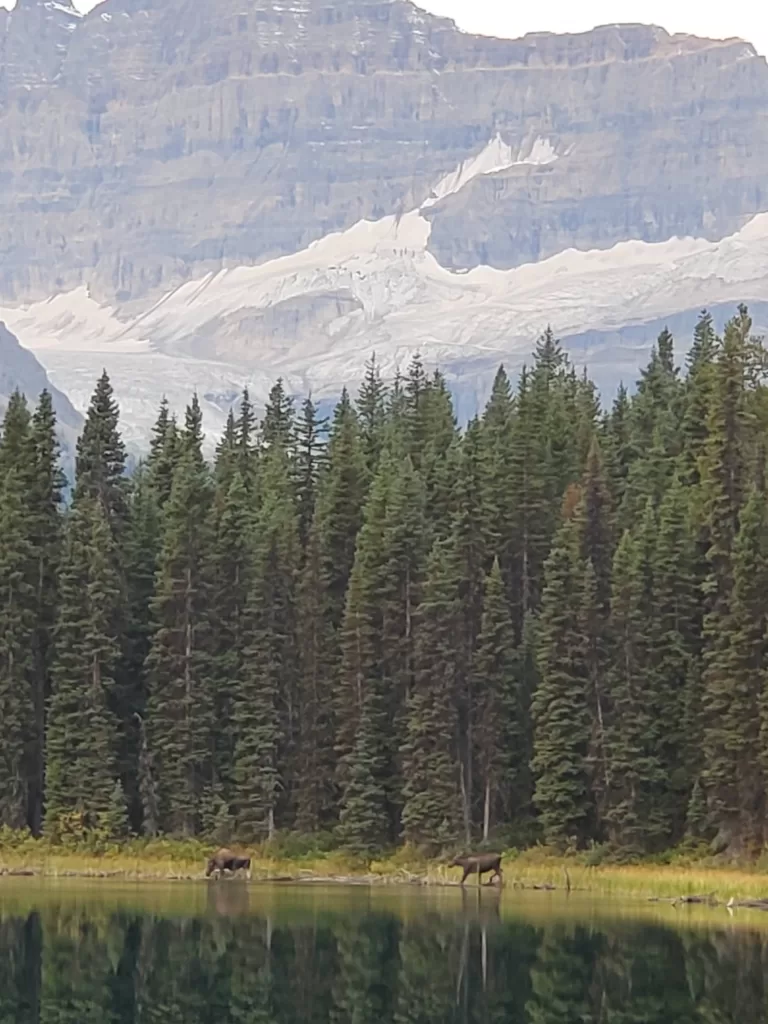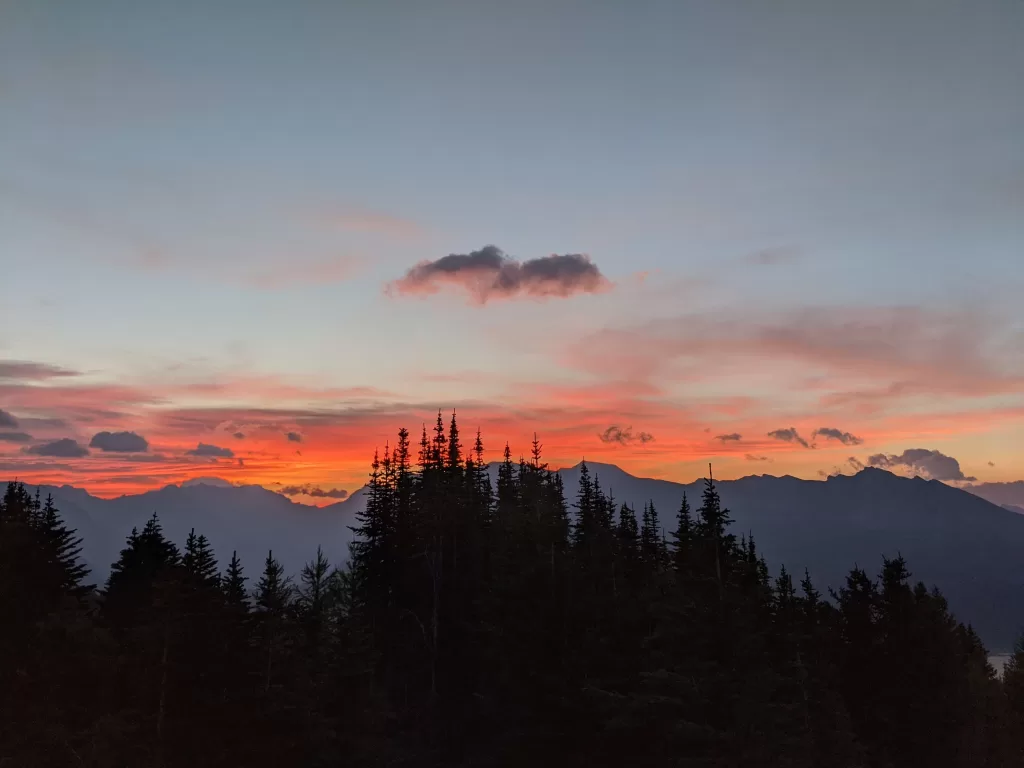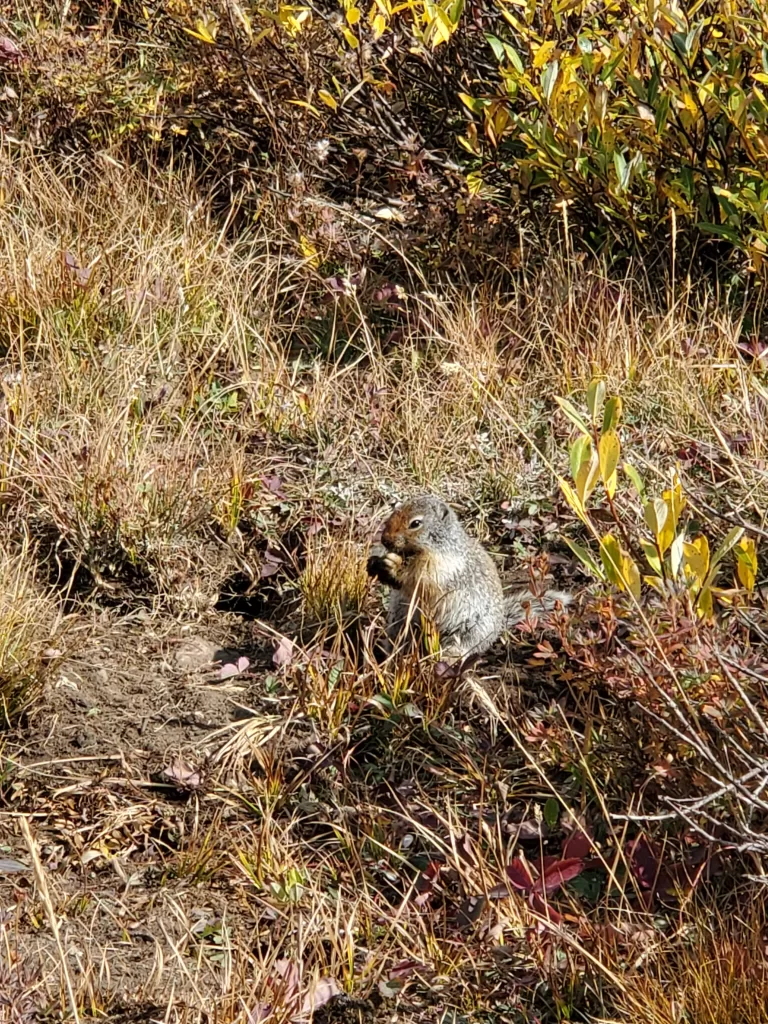Pamela:
Hello, and good day. Welcome to the Super Good Camping Podcast. My name is Pamela.
Tim:
I’m Tim.
Pamela:
And we are from supergoodcamping.com. We are here because we are on a mission to inspire other families to enjoy camping adventures such as we have with our kids. Today, Tim is going to introduce our very special guest.
Tim:
Yes, again. So I’d like to introduce a wonderful friend that does some pretty awesome trophy-tripping. It’s a little sketchy sometimes, certainly for old guys like me. We bonded because we somehow very quickly figured out we’re tree huggers and like to do lots of things in nature, animal lovers. She also uses bad words, which we won’t do on this podcast. But part of the reason I think she’s awesome.
Diana:
We’re covering today
Tim:
We’re filtering. She loves to travel, both here in Canada and abroad. She’s a senior project manager with an eco-friendly company that does urban housing. And she lives out West, which is behind me. If I could I probably would do too. I’d like to introduce you to Diana Banakh.
Diana:
Hi, thank you so much for having me.
Pamela:
You’re welcome. Thank you for being here.
Tim:
Cool. Thanks for coming out. We don’t see you enough because you’re on the West Coast now. So let’s talk about outdoor adventures. What are some of your favourite things to do?
Diana:
So I really, really love to hike. My partner and I both are very avid hikers. And we love just to be outdoors and to spend as much time as we can outdoors. That was definitely a huge benefit of moving out west, where it’s just a lot more accessible for us and being outdoors and hiking has now become even a daily thing. It’s no longer something that we need to escape out of Toronto to do. It’s always part of our lifestyle. Now, it’s an everyday thing. It’s been amazing. Love to canoe as well, I do. I don’t do it as often. But we do enjoy kayaking and canoeing when we can. And then, in the wintertime, we both snowboard. We rock climb in the winter as well, but indoor rock climbing. I haven’t done anything outdoors but indoors. This is why it’s in the winter. I like to spend all of our time outdoors when we can. And so everywhere we travel, we always try to find a hike to spend time outdoors and really be in nature anytime we can.
Tim:
That’s awesome. There was a point where I was thinking, maybe I’ll ask her what the allure of hiking is, but I’ve seen your pictures, so there’s no point to that! I’m using that as a tease. For anybody who’s listening to us, come check out our website, because we’re going to put some of Diana’s pictures up there, and they are amazing. You will want to go hiking too.
Diana:
Honestly, the photos don’t even do it justice. Every time we try to take photos, we’ll be standing there at a beautiful point that we’re trying to take the photos, my partner will pick up the camera, and start looking into the lens. And he’s just like, “This is not even as nice as it looks in real life.” It’s almost impossible to capture how beautiful some of these places really are.
Yeah, I found that even with travelling to the Grand Canyon, you just everybody tries to get that perfect picture of the Grand Canyon. It’s just you can’t.
Diana:
No, you have to be there.
Planning and Preparing for an Epic Backcountry Trip
Tim:
Yeah. Okay. So when you’re getting ready for a trip, which seems to be all the time, what kind of prep do you do, like physical prep? Do you do workouts? What kind of gear if you do do workouts? Do you take into account the hardcore madness of whatever this trip is? Whether it’s a light-duty, whether it’s insane, we’re doing 42 degrees up kind of things. What about elevation? How does that play into getting ready for a trip?
Diana:
Absolutely. So every time we do a hike, we definitely try to do as much research as we can to understand the terrain that we’re doing, the temperature that we’re in, how many kilometres we’re going to be hiking once again, what kind of elevation gain there is, and how difficult it will be because it definitely impacts our meal planning and affects the gear that we bring whether we need to bring snow shoes or hiking poles for balance. If we need to pack very light meals, we definitely have refined our packing a lot better and our prep over time. I have paid the price of not prepping. It’s been awful, we can maybe do another episode, but I got second-degree burns on my face one time from a really bad hike that I did not prepare for at all. And so I’ve learned my lesson at a young age. And now we definitely take the time to really do thorough research in terms of what kind of hike we’re getting ourselves into and then prepping accordingly. So if we need waterproof shoes, or we need gators, we need hiking poles, snow shoes, or anything like that gets vetted out right at the beginning. So we’ll usually put together a really good list of the things that we need. We meal prep very intensely. We’ve started working through dehydrated meals and measuring out all of our meals. Measuring our packs for proper ratio. So how much I can carry versus how much my partner can carry is very different. So we don’t split up 30 and 30 pounds, that’s usually, 25 pounds and 32 pounds for my partner. So we definitely try to find a sweet spot where we’re able to carry the weight and survive whatever length is required. We’ve definitely been a lot more conscious in terms of weight and reading a lot about ultralight hiking, and trying to refine our weight as much as possible, because, really, the lighter it is, the easier it is for us to keep going. So yeah, I think just a lot of research, a lot of organizing, a lot of lists. We make Excel spreadsheets and Google Drives for every trip. So we try to really stay on top of it and feel very comfortable going into it.
Tim:
Cool. So I want to say that I do the same thing, only I am old school. But I do type them up. I make an insane number of lists. And thank you for justifying what I do, and validating it.
Diana:
Oh, 100%. Now there’s no other way.
Pamela:
Alex and Jess from Tents and Timber referenced that as well. They enjoy a lot of that actual trip planning and getting their food just right and getting their packing just right.
Tim:
Yeah, and then come back from a trip and go,”Yeah, we did exactly the right things,” “We got the right amount of food.” It’s a little bit different with kids that are getting ridiculously tall every time you turn around. So caloric intake-wise, I can work it, and I do work it to the bone. And then I throw in three more meals because I have no idea how that’s gonna play out. If we get a busy day, or he hits a growth spurt, I’m in trouble. I’m starving for the last two days so that he can eat. It’s like that.
Diana:
We’ve gotten to a point where we make all these meals. We’re just constantly thinking about ways to make it better or just tinkering all the time. And then even when we’re on the trail, we’ve made our meal, we eat it. And as we’re eating, we’re just like, was this enough of this wasn’t enough of this? Do you? Are you satisfied right now? Should we pack more? Then we take so many little notes. And then the next time we’re prepping, we remember, we were not satisfied enough. We need to do more. We need more calories, and it’s definitely a constant work in progress, which I almost love, always refining and getting better and just seeing such a huge difference over time.
Tim:
Cool and camping stuff all the time. So very quick slide in there, meals. Do you buy all your meals? Do you do any dehydrating on your own? How does that play out?
Epic Backcountry Trip Meal Planning
Diana:
We have considered dehydrating on our own, but it doesn’t really seem to be worthwhile. We’ve never purchased dehydrated meals, the ones they sell at MEC. I find them exceptionally expensive on a per-meal basis. It’s ridiculous. So we have actually sourced a lot of great dehydrated meals and ingredients where we’ve made our own meals. And I’m talking about tuna in packets and pulled pork that are in packets, and all you need is water. So when we cook, the only thing we ever bring is a Jet Boil. We only boil water. So if we can boil water, that’s the only meal we have as options. If we’re car camping, then of course, we’ll barbecue some steaks and enjoy ourselves. But if we are on a backcountry camping trip, really the only option we have for cooking is hot water. So if we can’t make it with hot water, we don’t eat it. We’ve been definitely tinkering a lot more with dehydrated mashed potatoes, noodles, with dehydrated veggies. Bulk Barn has been amazing and a huge saving grace for just finding dehydrated foods. So we’ve definitely been taking a lot of time to try out different recipes to find something that is both really high in calories, but savoury and delicious and satisfying after a hike. We’ve definitely had our fair share of prison food meals, where you’re just eating this for sustenance. But we’ve had a few meals that were genuinely so delicious. And I would eat this even if I wasn’t very hungry, even if I wasn’t desperate for food right now. I would definitely still enjoy it. So we’ve had a few successes so far.
The Most Important Hiking Gear
Tim:
Cool. All right, cool. I can work with that. So gear choices. Obviously, there are seasonal differences but like essentials for hiking, hiking poles, killer hiker boots, what else?
Diana:
Boots, I think, is probably one of the number one. I would also say really good socks have been a huge game-changer. So getting like the sock liners or even they have these really cool they’re like Frogger socks, but really, really great so that you don’t get blisters and you can survive much longer. Hiking poles have also made a substantial difference. We only got them for Mount Assiniboine last year, because we read so much about people recommending hiking poles, and we thought we should. And then after that point, we’ve been using them so often, even on shorter hikes, they make such a huge difference. And just for practising the skill of using hiking poles, because they are only effective if you know how to use them properly. Otherwise, they definitely can actually cause a lot of pain, like joint pain, if you don’t know how to use them. Otherwise, I would say a bag. A really good cooking stove is really great. I mean, we save so much fuel with our Jet Boil. It was definitely a huge investment. It’s very expensive compared to other options. But our water boils so fast. It’s so compact, so efficient. So it saved us a lot of time and fuel. And then I think those are the number one things. Yeah, everything else. It’s like we’re still improving on haven’t perfected just yet.
Tim:
Well, that’s good. That’s what I’ve been doing forever. We don’t have a Jet Boil. We’ve got an MSR Pocket Rocket II. It is wickedly efficient. But I picked up a windshield this year to make it much more along the idea of a Jet Boil. But now I’ve added more weight to the pack. So how am I going to play that? It’s great to tweak that sort of stuff all the time. So I would hazard that probably the smartest move is, maybe not when you’re first getting into it, but once you’re into it a bit, buy as opposed to renting anything. Because then it suits you. It’s not something that’s close to what you need. It’s something that’s bang on for you.
The Importance of Good Hiking and Camping Gear
Diana:
Yeah, exactly. There are even a few things that I think I might have been a bit more hesitant about in the past years when I first started to purchase because I thought, “Oh, I don’t know if it’s really worth that amount of money.” But even our tent, we spent a lot of money on, and our tent has just been such a huge, huge, treat. It’s so much more lightweight. That’s the other piece – really investing in the items that you’re always going to bring, regardless of the camping trip. So when we’re going backcountry camping, and then if we’re doing car camping, we’re still bringing our tents. We always have a tent, we always have to bring it and so spending the money on a really good tent was really wise, and we love it. It’s so quick to set up when we’re showing up. We’ve had canoeing trips where we end up getting lost on the water, and we basically show up to the shore when the sun has set, and it’s dark, and we don’t have the visibility to be able to take our time setting up. So being able to set up really quickly or if it starts raining and we’re able to set up really quickly has been a huge help. I would even say my sleeping bag and sleeping pad have been a miracle. I actually spent a lot of money buying really crappy sleeping bags that didn’t work, and I would freeze in May. Even in Ontario in May, I would be freezing cold because the just the insulation was awful. And my sleeping pad was really uncomfortable and awful. And I wouldn’t sleep the entire night; I’d just be stuffing my sleeping bag with all my clothes to help insulate. Then last year, I just said, “I’m an adult. I am doing this.” I’m not going camping once a year. I’m going like 20-30 times a year. I should probably invest the money and invest in a really, really good sleeping bag, and it’s just been such a saving grace. It’s so nice. I sleep so well. I feel rested the next day and ready to go. I’m not just suffering over the weekend. So yeah, a sleeping bag and sleeping pad are also very huge essentials.
Tim:
20-30 times a year!
Diana:
A lot. Especially now that we’ve moved out west, we’re finding that we’re going camping on a Friday night when we don’t have plans. It’s so close. We drive for 40 minutes, and we’re in the middle of nowhere and do some car camping, backcountry camping, or hiking somewhere. You can camp anywhere here. You find a forest, a forest logging road, and you can drive up there and park your car and go hike wherever you want and sleep as long as you’d like. Pack in and out. But really, there’s so much camping opportunity here that even if we go for one night, it’s so worth it.
Pamela:
So amazing.
Tim:
Jealous! So the young lady mentioned a trip.
Pamela:
An epic trip from the sound of it. Do you want to go ahead and launch into it, Diana?
An Epic Backcountry Trip: The Mount Assiniboine Hike
Diana:
Absolutely. So we did the Mount Assiniboine hike last year. We were there for four days. It is all around the Canmore area, the Kananaskis area in Alberta. Technically it’s on the BC side, but you fly into Banff. So we drove an hour and a half outside of Banff. The hike starts at Mount Sharp, which is the route that we took. Mount Assiniboine, it’s considered the Matterhorn of the Rockies. It’s really, really beautiful. It’s located on the Great Divide, like the great continental divide. In order to access the mountain, it’s only by hiking in or helicopter. The helicopter is like $200 each way, but it’s only eight minutes. So it’s definitely worth it in terms of the time. It’s lovely. Or you can hike in. There are three different access roads for hiking in. You can go through Mount Shark trailhead, through Assiniboine Pass, and then there’s another road that goes Mount Shark through Wonder Pass. And then there’s a hike from Sunshine Village, which is the ski resort. You have to take a gondola, and then you hike from there. So we actually did it through the Wonder Pass area. It’s 26 kilometres each way. It’s definitely a long way. It’s also the steepest and most technically difficult way. But we had no choice. The hike from Sunshine Village is more kilometres, but it’s very gradual. But because at the time the gondola was closed, you would be adding on almost ten extra kilometres for that hike. So it’d be very gradual, but you’re really taking so much time. So we decided to take the loss and go through the harder route. So we drove an hour and a half to the trailhead and Mount Shark and parked our car there. Also, when you park your car at that specific trailhead, you do need a conservation pass in order to park. You also need a permit to do backcountry camping. The conservation pass isn’t even a campground permit. It’s just a permit to enter and be in the park. The entire hike is like 57 kilometres for the full loop. The first two days we spent going into a centre point, so it was around 13 kilometres, and then we camped and then another 13 kilometres and then we got to Assiniboine. We started the first 13 kilometres. It was really nice, very flat, with a little bit of an incline, but really, really nice. You get a really great pace. And you’re in the forested bush the entire time. The first campsite was really great. Lots of people were there. It was really nice. You feel the energy of everyone en route. Everyone’s packed. You’re ready. You’re just so fired up to be there. It was awesome. In the evening, when we got to the campsite, we went to the lake and went on a little hike around the area, and we saw a mom moose with a baby moose in the water in the lake.
It was so magical! The sun was setting. The moose was maybe, I would say, 50 feet away from us, maybe 100 feet, so close. We didn’t even realize the moose was there at first, but another couple had come down where we were near the lake, and they were wildlife photographers and were like, “Oh my God, wait, don’t move. Be careful. There are moose.” Yeah, they’re just freaking out. We didn’t even realize it, but yes, it was a moose that was just so beautiful. Then the next morning, we went back to the same lake to do breakfast. And we noticed three moose on the water, and they were once again just out there eating, I guess, seaweed or whatever they eat. Yes, the vegetation, so that was really awesome. Then from there, we actually continued the second half of our hike through Wonder Pass. And that is also 13 kilometres, but this is brutal switchbacks – really, really steep. That’s where you get all of your elevation gains through this path. You’re also entering into this area which is called Bryant Creek. Basically, from July to mid-October, it’s a core area for grizzly bears. The Banff-Canmore area is, in general, a bear habitat, but this Bryant Creek area is specifically a core protected area for female grizzlies and their cubs. There is a really huge volume of buffalo berries. And so they eat all of these buffalo berries, but they’re concentrated in this area. So because they’re preparing to hibernate, they’re just eating like crazy, and their cubs are eating like crazy, and apparently there have been a lot of grizzly bear attacks because hikers will be going through this area, and they’ll scare the mom or the cubs while they are eating these berries on the trail. So it’s very much a risk. This is the first time I have hiked through very serious grizzly bear territory. It was the first time we had bear spray on us. Our Turo driver actually gave us his bear spray when we rented the car. He asked us if we’ve ever used it, and we’re like, “no, does that matter?” So he explained how to use it. Because apparently, he had someone who used it and wasn’t aware of the recoil and actually smacked themselves in the face from the recoil while trying to shoot it. So yet another thing where you have bear spray, but you don’t actually understand how to use it.
Pamela:
It’s not like bug spray.
Diana:
Exactly. You can’t miss with it. You cannot afford to miss with it. If you miss, it’s so much more dangerous that way. So we had to basically do this route around the protected area. It’s crazy because you have this road that forks into three different trails, and two of the trails go through this protected, restricted area. But there’s no signage about it at the trail, so there’s no line to stop you. It’s there because the Rangers are still going through there. You can go through that path with four groups of four, and two people on horseback. That’s the only way to go through that path. But once again, there’s nothing to block it. So if we hadn’t read about the restricted access, we would have had no idea that this is a protected area and that there’s this risk of passing through there. So thank goodness we did because then we went on the detour area where it’s allegedly safer. But I mean, I don’t think anything’s that safe when you’re going through grizzly territory. And then we were going to do this hike. It was crazy. A lot of switchbacks, a lot of elevation. And then you basically get to the top of Wonder Pass, and it turns into like a beautiful meadow valley. And it’s just stunning. Assiniboine is out there.
And then you’re going all the way down, weaving down. You have deer running around through the fields. Apparently, people saw the grizzly bear in that meadow. It’s very common to see grizzlies in the meadows because there are so many berries. When we were going up, there were a few people coming back down, and they mentioned that they saw the bears. So just a heads up. We didn’t see it. All good. That was great for us. And then yeah, you basically start going down, and you see the Assiniboine Lodge, and then you see Assiniboine, and it’s just so spectacular and breathtaking. We were running down the hill, just so excited. I mean, we were exhausted at this point. Because it’s so many kilometres, so much elevation, but to see the lodge and Assiniboine and the entire valley because you get such a beautiful view. And we were sprinting down into the lodge, and just so fired up and excited like a huge burst of life. And then we stayed at Marvel Lake Campground. There are a limited number of tent pads, and you have to reserve them. We reserved, I think, six months in advance. You can only camp there if you’re reserving. So it’s a very intense game of getting your tent pad. And people are constantly checking. There are Rangers always there. It’s very strictly monitored. We stayed there for two days. It was really interesting because we got to our tent pad, we were exhausted and eating all of our food. And then you have people coming in. They’re flying in from the helicopter. They smell like laundry and clean clothes. We’re just sweaty and melting away.
Tim:
Less stinky than me!
Grizzlies!
Pamela:
So you didn’t actually encounter a grizzly yourself?
Diana:
We did not personally. There were a bunch of scenarios where we were either leaving somewhere or coming back from somewhere, and the people going in the opposite direction were like, “Oh my God. Did you guys see the bear? There was a bear. You guys were just there in that area. And there was a grizzly bear.” So we just kept missing the bear. We went to go get water at the lake. And we were there for maybe 40 minutes. We were coming back up, and they were like, “Oh my god, did you guys see the bear? Like he was just down there next to the water, which we were all watching from up here.” While we were there, we also did a few other hikes. There’s lots to see there, which is why a lot of people like to helicopter in. As you helicopter in, stay at the lodge, stay at a hut; even if you’re camping, there are so many beautiful trails and hikes to do while you’re there. There are lots of things to fill up your time. So we did. Our first hike was, I think, at 4 am. We woke up and hiked to the niblet, the nublet and the nub. They are basically three little cascading peaks. And you get the absolute best view of Assiniboine. We did it in the middle of the night, so we could watch the sunrise. It was very stressful, very exhausting. I’m not a morning person. So I was just very bitter the entire time.
Tim:
So stressful, because you’re not a morning person or because of lack of light factor and trying to figure out scree and scrabbling and all that sort of jazz?
Diana:
It’s a lot of scrambling at the end. You’re just going up the entire time, so it’s pretty exhausting first thing in the morning when you wake up. The other thing, is you’re still in grizzly territory. So that’s very stressful in the middle of the night with a headlamp, going through grizzly territory while going uphill the entire time and then scrambling up the mountain. There are a few layers, but probably the grizzly thing is the worst part. This is constantly in the back of your mind. So we did that. It was super, super cold, very windy, but so amazing. It was just such a beautiful sunrise. And that’s where we got the time-lapse that I sent you.
It’s just magical. It was so amazing to be there. So we spent a few hours up there and then did the other little peaks. And then we came down. We went to a few other small lakes down there below. The day after, we went to Og Lake, which is another campground that you would access if you went through the Sunshine Village route. We basically went back in that direction to the 14-kilometre loop. But it’s all meadows, super flat. There are marmots all over the place, everywhere.
Really beautiful, beautiful meadows, and you’re kind of in a valley between a bunch of mountains, which is really nice. And then, the next day, we packed up. It rained all night. It also gets really cold in the middle of the night. This was the September long weekend. In the middle of the night, it was borderline frosty. Super, super cold that night. It rained our last night as well. Like the entire night would not stop raining. So we woke up in the morning. Everything was soaked. We packed up everything and then hiked the entire thing all the way to our car, twenty-six kilometres we just powered through because it’s downhill. So it’s definitely a lot easier. No food is left in our packs, so they’re way lighter. So we just powered through all the way back down. Bloody feet, and lots of blisters. It was exhausting. But honestly, we got back to the car, and we were just so thrilled. Just so grateful to have been there. It was so amazing. And then went back to Banff and partied and went out. Got delicious meals. And then we went out partying. It was awesome.
Pamela:
So how many days was it altogether?
Diana:
It was four days.
Tim:
Yeah. In the grizzly territory. We’ve done a couple of podcasts about bears, black bears. They’re not an issue. Brown Bears? A little bit. grizzlies? Yeah, no. You won’t find me in places where they have grizzlies. I will let people like you go and do amazing time lapses and send them to me. That’d be fine.
Pamela:
Absolutely. Had you run into a grizzly, what would your plan have been?
Diana:
We did discuss that scenario several times. Because at first, you walk in, and there are all these signs with an angry grizzly. And they’re like: It’s serious. There actually are grizzlies. We’re not just trying to scare you. Genuinely be aware of it. We tried to create a game plan of, okay, if we see a grizzly, what are we doing? How are you going to reach for the bear spray? We made sure it was very much accessible to us. Do I have to do it, or do you have to do it? Where to pull? How to hold it? Where are you going to spray? So we did run through the scenarios just so that it wouldn’t be the first time that we’re actually trying to figure out what you pull in or you grab it. I don’t want to have that scenario. Ideally, you hope it doesn’t ever happen as much as you want to plan. I think it’s very different when it actually happens. There are nerves and everything. We had a run-in with a mountain goat one time, and that was so intimidating. We were trying to be super calm because he was really, really close to us, and I wasn’t sure what it would do. But I think as long as you’re calm, like number one thing, be calm. Don’t jump to the spray from all the videos and research I’ve ever done. It usually just, makes a lot of noise. A lot of times, the bear will move away and move along and keep on walking. And yeah, you hope you don’t ever run into it. That’s the only thing.
Tim:
Yeah, I don’t ever want to know. I want to be there and love to be prepared. I don’t ever want to know how that plays out or anybody that I know, either. They’re big. They scare the crap out of me.
Pamela:
So what’s your plan for your next big hike?
The Next Epic Backcountry Adventure: The West Coast Trail
Diana:
The next one is actually going to be in two weeks. We’re doing the West Coast Trail, which is going to be five to six days. It’s, I think, 70 or 75 kilometres, and it’s all along Vancouver Island around Victoria. It’s all along the beach. It’s very, very wet. There are a lot of ladders, mud and roots and beaches. We actually have to plan out all the tides, because you can only access the pathway when the tide is below a certain level. So we have tide maps that we’re going through now. And just mapping out all of the times is the big thing. We just went grocery shopping yesterday, actually no, yesterday and today for all of our meal prep and planning. So we’re doing that as well. Once again, the wet thing is a big, big problem. Once your shoes are wet, they’re wet. They don’t dry instantly. So that’s going to be the mud and the wetness, and the ladders and the huge distance is going to be a big challenge.
Pamela:
In our episode with Alex and Jess from Tents and Timber, they discussed their West Coast Trail trip. They talked about very much the same things that you just mentioned, being wet all the time, etc.
Tim:
The wetness on the ladders, which I hadn’t tied together, but they said it gets because pretty slick, sometimes.
Diana:
Exactly. Humidity, and all the routes and everything. So if you are not able to make it through the sections where the tides are coming in, you have to go into the interior of the forest. I mean, there. It’s muddy. It’s rooty. It’s rough.
Pamela:
Sounds exciting.
Tim:
All right. That sounds awesome. I wish you an amazing trip. I know it will be! Tents and Timber are a lovely couple that we did an episode with, probably six weeks or maybe even eight weeks ago. They said it’s like the best trip they ever did, and they’re out tripping all the time.
Diana:
Yeah, I saw it on your episode and already pinned it for André, and it was cool. Yeah, I said this is so perfect. It’s exactly what we need.
Tim:
If you do any Instagram or anything like that, they’re really good on Instagram. And they posted a tonne of sort of trip logs, day one, day two, day three, and it’s pretty informative. And they put in a boatload of pictures. So it’s a pretty good storybook for certainly what they did. It’s not a bad idea to have a look.
Diana:
Ok, awesome. That’s great.
Pamela:
That’s it for us for today. Thank you so much to our special guest, Diana. She’s just amazing! We loved hearing about the Assiniboine hike and her future travels. You can always reach out to us if you have anything you want to comment on. Our email address is hi@supergoodcamping.com. Supergood.camping.com is our website. And we are on all of the social media. And we’re up to four followers now on YouTube. And we’ll talk to you again soon. Thank you so much. Bye
Tim:
Bye

